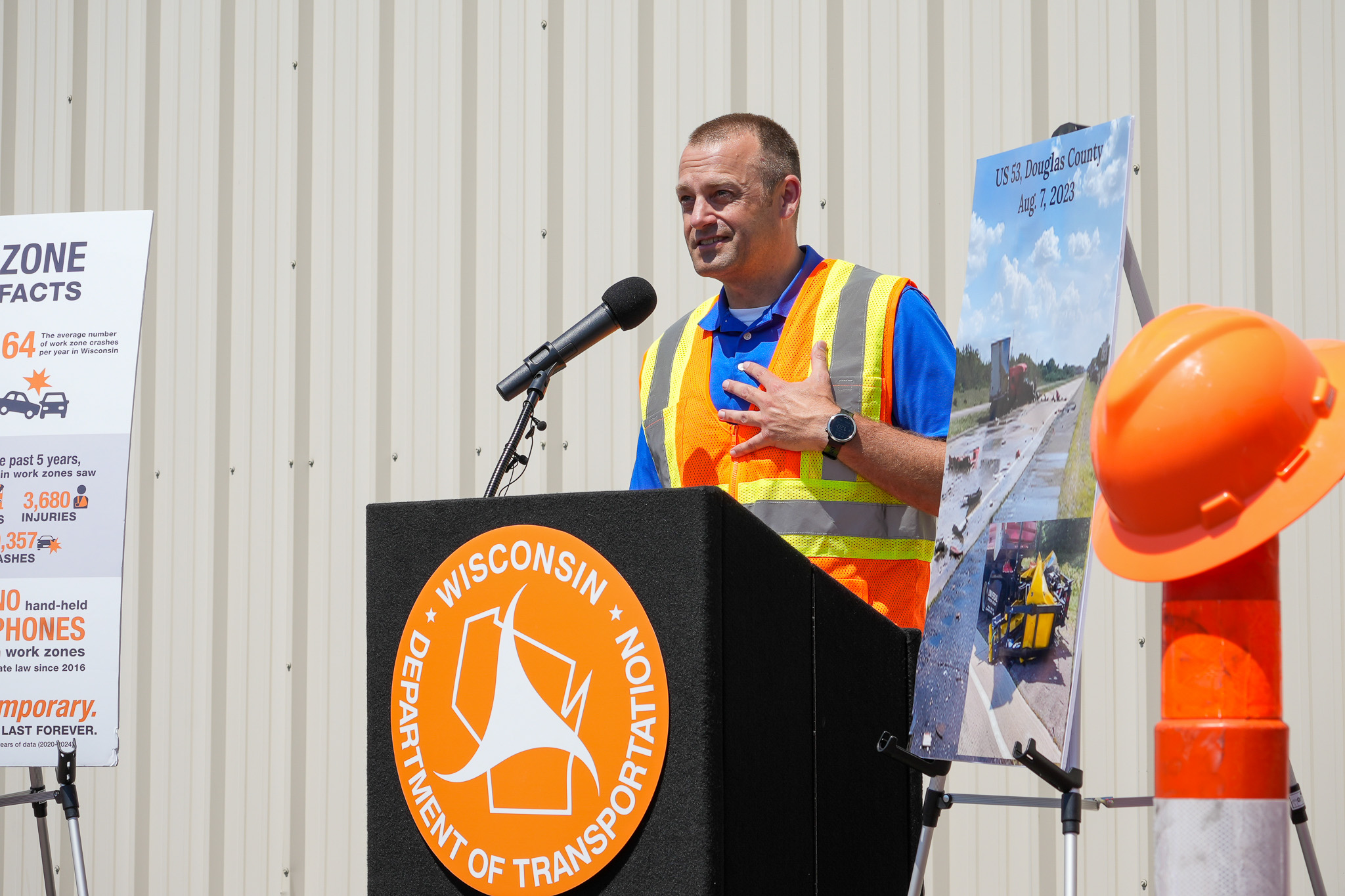
July 29, 2025
By Lane Kimble
SUPERIOR, Wis. — The mind of an engineer often goes to math and analytics.
Lunda Construction Vice President Mike Hahn crunched some numbers, pondering why drivers will accept completely stopping at red lights but not simply slowing down a bit when they see orange barrels.
“They’re willing to take 60 to 90 seconds there (at a stoplight), but they’re not willing to take the regulatory reduction in speed… to me that’s shocking,” Hahn said. “There’s no difference. We’re not losing time by slowing down and making our work zones safer.”
Hahn, who is also WTBA Board 1st Vice President, offered a contractor perspective Monday afternoon at WisDOT’s Northwest Region Work Zone Safety event in Superior.
It’s the third year WTBA and WisDOT have partnered to expand safety messaging across Wisconsin all season long, going beyond Work Zone Awareness Week in April.
“This is not just a one-week issue for us. This is an all-year event, an all-year problem we face,” Hahn said.
Work zone crashes in Wisconsin killed 10 people in 2024, including two WTBA-member construction workers. So far in 2025, four people have died and more than 300 have been injured in 971 work zone crashes according to UW-Madison data.
“Work zones present unique challenges that demand our full attention,” Northwest Region Director Jerry Mentzel said. “The department and our partners are constantly looking for innovations that enhance work zone safety for everyone, but ultimately it’s up to every driver, each of us, to stay focused.”
The State Patrol does what it can to help. Capt. Craig Larson says Northwest Region troopers have issued more than 15,000 citations and warnings across the 20 counties they patrol in 2025. About 500 of those were in work zones.
“Each traffic stop has the potential to save a life, to help a motorist understand the risk of dangerous driving before that crash occurs,” Larson said.
With half the summer left and hundreds of active projects, Hahn knows there’s a long way to go before 2025’s crash data are final. He hopes the numbers he shared reach as many drivers as possible, perhaps one day bringing those statistics to zero.
“People are our workforce, people are what build industry and without those people and their families, we wouldn’t be able to do what we do to make sure your roads are safe,” Hahn said. “Take those extra 50 seconds, slow down through those work zones, and be mindful that everyone out there has a family and they want to go home at the end of the day.”
